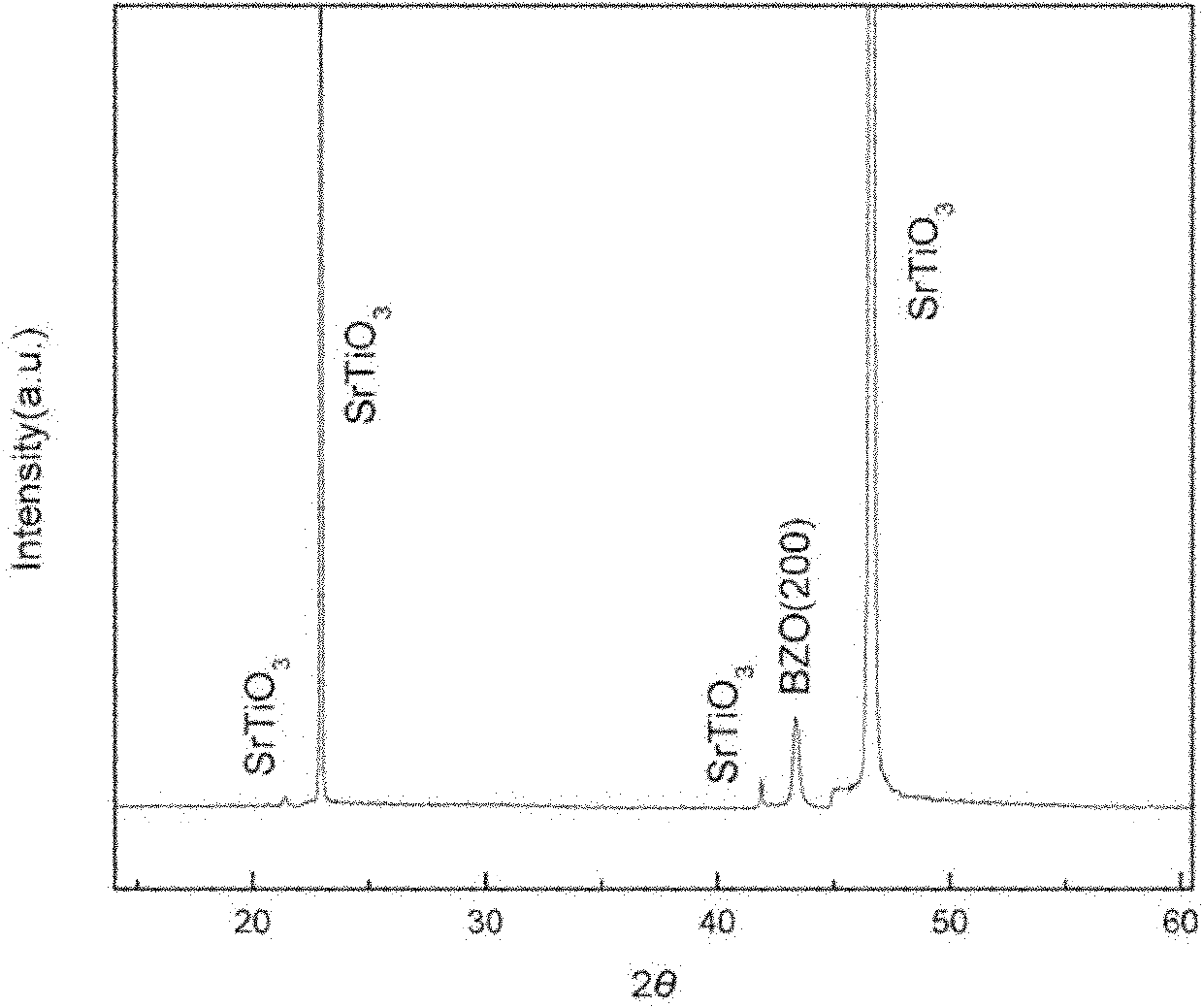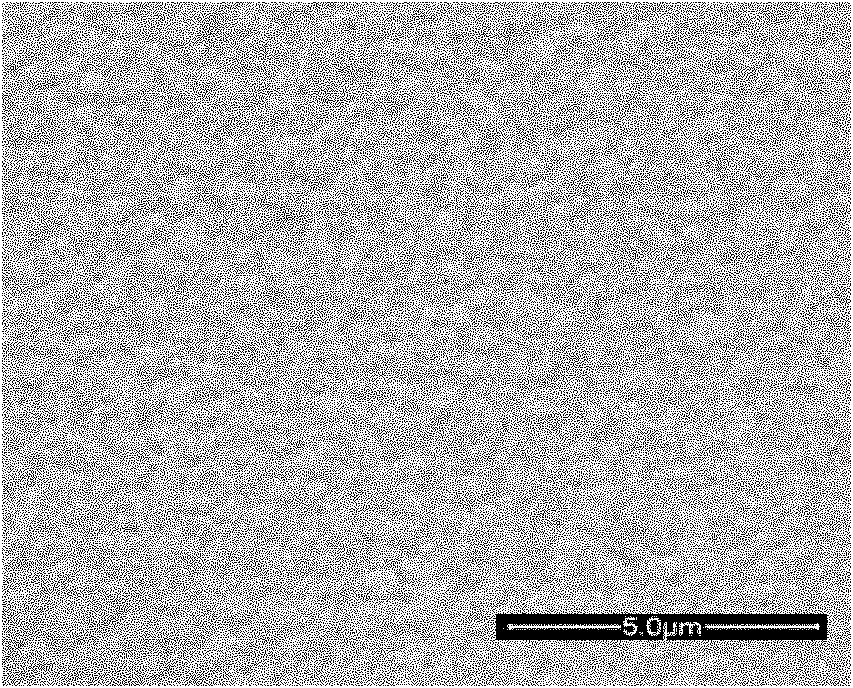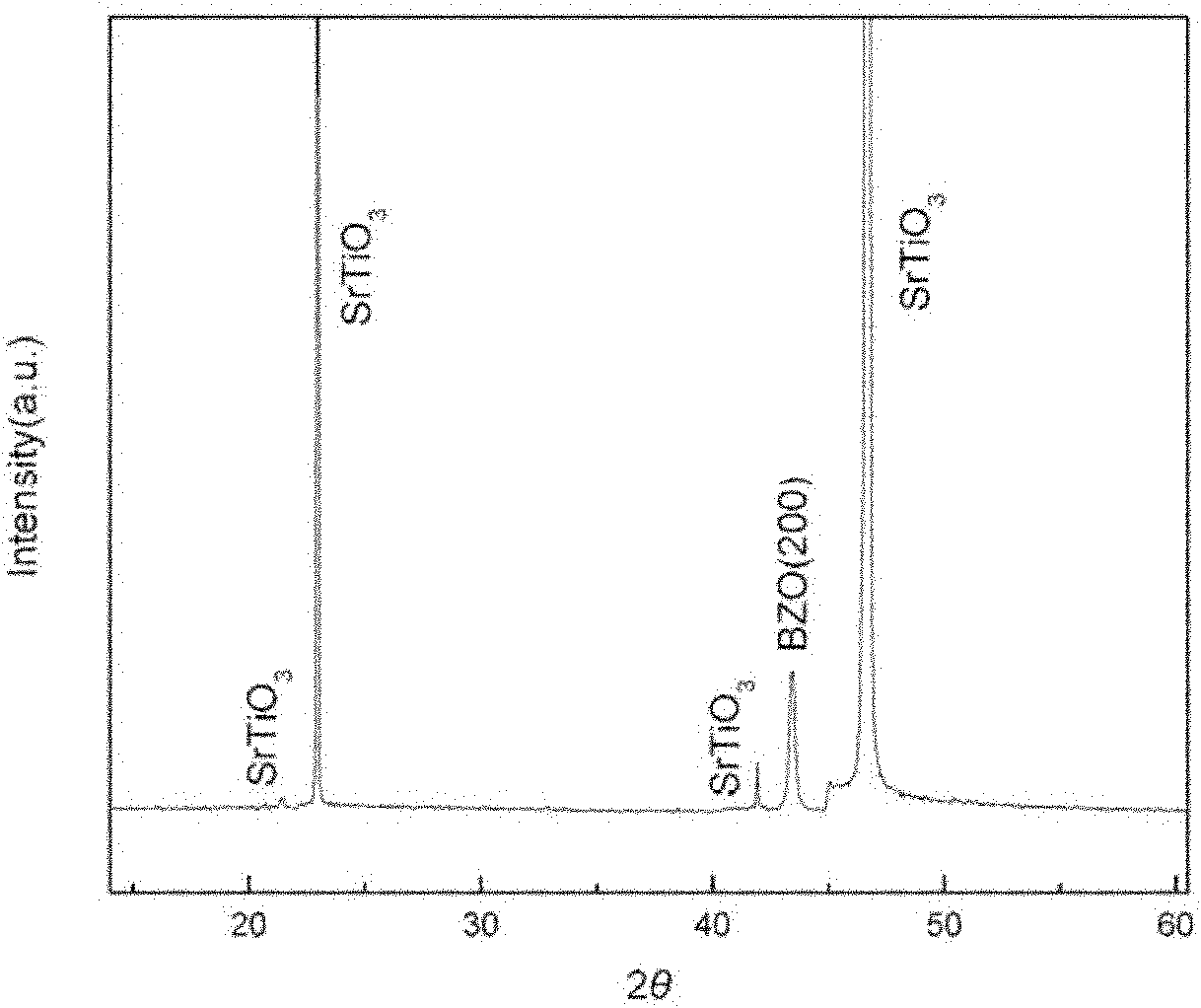Method for preparing thin film of high-temperature superconductive coating conductor BaZrO3 buffer layer
A technology of coated conductors and high-temperature superconductivity, which is applied in the manufacture/processing of superconductor devices, chemical instruments and methods, inorganic chemistry, etc., and can solve problems affecting the superconducting performance of ReBCO
- Summary
- Abstract
- Description
- Claims
- Application Information
AI Technical Summary
Problems solved by technology
Method used
Image
Examples
Embodiment 1
[0028] The first specific embodiment of the present invention is a kind of high temperature superconducting coating conductor BaZrO 3 The method for buffer layer thin film, its step is:
[0029] a, preparation of anhydrous solution: barium acetate and zirconium acetylacetonate are equal to the ratio of 1: 1 by the ion number ratio of barium: zirconium, dissolve in propionic acid, ultrasonic makes solution uniform, forms anhydrous solution;
[0030] b. Colloid preparation: Add polyvinyl butyral (PVB) to the anhydrous solution in step a for ultrasonic dissolution to form a viscous colloid. The addition of polyvinyl butyral (PVB) accounts for 5% of the total mass of the colloid.
[0031] c. Colloid coating and drying: Coat the colloid prepared in step b on the substrate, and then dry at 150°C. The specific method of coating the colloid on the substrate of the coated conductor is as follows: drop the colloid on the substrate and rotate it with a glue leveler so that the colloid ...
Embodiment 2
[0037] The preparation method of this example consists of the following steps in turn:
[0038] a, preparation of anhydrous solution: barium acetate and zirconium acetylacetonate are equal to the ratio of 1: 1 by the ion number ratio of barium: zirconium, dissolve in propionic acid, ultrasonic makes solution uniform, forms anhydrous solution;
[0039]b. Colloid preparation: Add polyvinyl butyral (PVB) to the anhydrous solution in step a for ultrasonic dissolution to form a viscous colloid. The addition of polyvinyl butyral (PVB) accounts for 4% of the total mass of the colloid.
[0040] c. Colloid coating and drying: Coat the colloid prepared in step b on the substrate, and then dry at 100°C. The specific method of coating the colloid on the substrate of the coated conductor is as follows: drop the colloid on the substrate and rotate it with a glue leveler so that the colloid is evenly coated on the substrate.
[0041] d. Thermal decomposition treatment: place the colloid-co...
Embodiment 3
[0046] The preparation method of this example consists of the following steps in turn:
[0047] a, preparation of anhydrous solution: barium acetate and zirconium acetylacetonate are equal to the ratio of 1: 1 by the ion number ratio of barium: zirconium, dissolve in propionic acid, ultrasonic makes solution uniform, forms anhydrous solution;
[0048] b. Colloid preparation: Add polyvinyl butyral (PVB) to the anhydrous solution in step a for ultrasonic dissolution to form a viscous colloid. The amount of polyvinyl butyral (PVB) added accounts for 3% of the total mass of the colloid.
[0049] c. Colloid coating and drying: Coat the colloid prepared in step b on the substrate, and then dry at 200°C.
[0050] d. Thermal decomposition treatment: place the colloid-coated substrate in a sintering furnace, and feed argon gas into the sintering furnace to raise the furnace temperature to 170°C at a rate of 1°C / min, and then increase the temperature at a rate of 0.5°C / min. The speed ...
PUM
 Login to View More
Login to View More Abstract
Description
Claims
Application Information
 Login to View More
Login to View More - R&D
- Intellectual Property
- Life Sciences
- Materials
- Tech Scout
- Unparalleled Data Quality
- Higher Quality Content
- 60% Fewer Hallucinations
Browse by: Latest US Patents, China's latest patents, Technical Efficacy Thesaurus, Application Domain, Technology Topic, Popular Technical Reports.
© 2025 PatSnap. All rights reserved.Legal|Privacy policy|Modern Slavery Act Transparency Statement|Sitemap|About US| Contact US: help@patsnap.com



